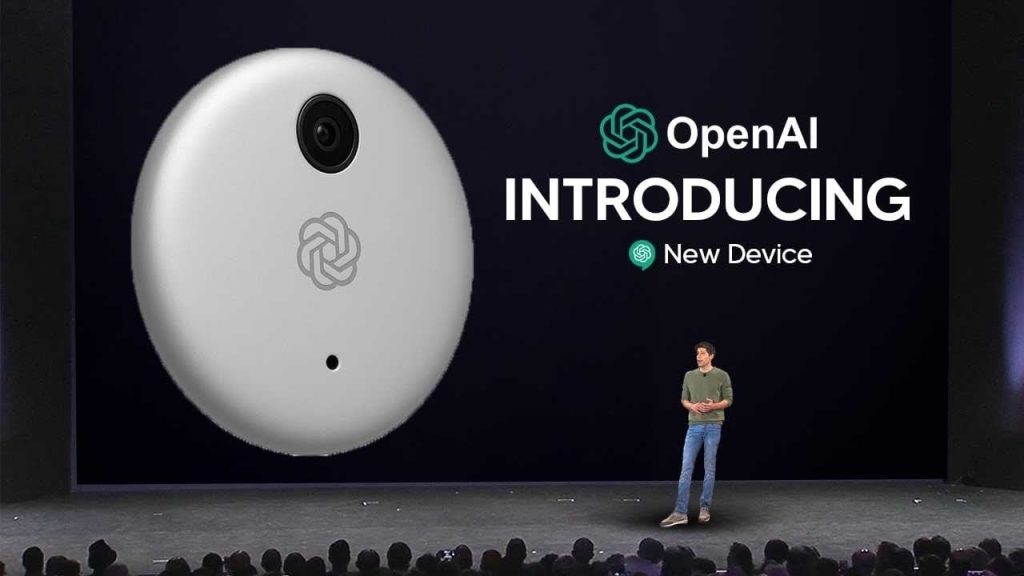
What if the way you interact with technology could feel as natural as speaking to a friend? OpenAI’s latest innovation—a innovative Input/Output (IO) device—promises to transform this vision into reality. In a world where AI often feels distant or overly technical, this device bridges the gap, making artificial intelligence more intuitive, accessible, and human-centric than ever before. Imagine managing your daily tasks, controlling your smart home, or retrieving complex information with nothing more than a simple conversation. This isn’t just a step forward for AI; it’s a bold leap toward a future where technology seamlessly integrates into every aspect of life.
In this exposé, AI Grid explain how OpenAI’s IO device is poised to reshape the landscape of human-AI interaction. From providing widespread access to AI accessibility to creating a unified ecosystem for smart devices, this new tool addresses the challenges that have long hindered widespread AI adoption. But what makes it truly remarkable is its potential to not just meet but anticipate your needs, adapting to your preferences in real time. As we delve deeper, you’ll discover how this device could redefine productivity, creativity, and even how we think about technology itself. Could this be the moment AI finally becomes a natural extension of our lives? Let’s explore.
Transforming AI Interaction
TL;DR Key Takeaways :
OpenAI’s new Input/Output (IO) device transforms human-AI interaction by allowing natural, conversational communication, making AI more intuitive and user-friendly.
The device enhances AI accessibility by lowering the learning curve, making sure compatibility across platforms, and empowering users of all technical skill levels.
Seamless integration into everyday life is achieved through compatibility with smart home systems, wearable technology, and workplace tools, simplifying routines and boosting efficiency.
The device provide widespread access tos AI by fostering innovation in areas like education, productivity, and problem-solving, allowing broader participation in the AI-driven future.
OpenAI’s IO device sets a new standard for AI innovation, paving the way for advancements in healthcare, education, entertainment, and other critical sectors.
Transforming Human-AI Interaction
At the core of OpenAI’s new device is its ability to transform how you communicate with AI. Unlike traditional systems that often rely on rigid commands or technical expertise, this device enables natural, conversational interactions. Whether you’re managing tasks, retrieving information, or controlling smart devices, the device adapts to your preferences, making AI more intuitive and approachable.
For example:
Task management becomes simpler as the device understands conversational instructions, eliminating the need for complex commands.
Real-time information is delivered effortlessly, without requiring you to navigate intricate interfaces or queries.
Smart device integration allows you to control your environment with ease, enhancing convenience and efficiency.
This focus on usability ensures that AI becomes a practical and integral part of your daily routine, empowering you to interact with technology in a more human-centric way.
Expanding AI Accessibility
One of the most significant barriers to widespread AI adoption has been accessibility. OpenAI’s device addresses this challenge by eliminating the need for complex interfaces and making sure compatibility with diverse user needs. Whether you’re a tech-savvy individual or someone with minimal technical expertise, this innovation ensures that AI is within your reach.
Key benefits include:
Lowering the learning curve for new users, making AI tools easier to adopt and use effectively.
Providing a consistent experience across various devices and platforms, making sure seamless functionality.
Empowering individuals and communities to use AI for education, productivity, and problem-solving, fostering innovation and creativity.
By providing widespread access to AI technology, the device opens up new opportunities for individuals and organizations alike, allowing broader participation in the AI-driven future.
OpenAI IO Device: Transforming Human-AI Interaction Forever
Take a look at other insightful guides from our broad collection that might capture your interest in OpenAI.
Seamless Integration into Everyday Life
A major challenge in AI adoption has been the lack of integration across systems and platforms. OpenAI’s IO device addresses this issue by serving as a central hub for AI-powered solutions. Its compatibility with a wide range of devices ensures that AI can be seamlessly woven into your existing ecosystem, enhancing both personal and professional aspects of life.
For instance:
Smart home systems can be connected to automate daily tasks, such as adjusting lighting, managing appliances, or setting reminders.
Wearable technology integration provides real-time insights and assistance, improving health monitoring and productivity.
Workplace tools are enhanced to streamline workflows, boost efficiency, and support collaboration.
By creating a unified and efficient environment, the device ensures that AI becomes a natural extension of your daily activities, simplifying routines and allowing smarter decision-making.
Driving the Future of AI
The introduction of this advanced IO device signals a pivotal moment in the development of artificial intelligence. By prioritizing usability, accessibility, and integration, OpenAI is setting a new standard for innovation in the field. This device not only enhances current applications but also lays the foundation for future advancements in AI technology.
In the years ahead, AI’s influence is expected to expand into critical areas such as:
Healthcare, where AI could assist in diagnostics, personalized treatment plans, and patient care management.
Education, by providing tailored learning experiences, interactive tools, and access to diverse resources.
Entertainment, through the creation of immersive, interactive content that redefines user experiences.
As AI becomes more deeply embedded in society, its potential to improve quality of life, drive innovation, and address global challenges will continue to grow. OpenAI’s device is a key step toward realizing this vision, making sure that the benefits of AI are accessible to all and integrated seamlessly into everyday life.
Media Credit: TheAIGRID
Filed Under: AI, Top News
Latest Geeky Gadgets Deals
Disclosure: Some of our articles include affiliate links. If you buy something through one of these links, Geeky Gadgets may earn an affiliate commission. Learn about our Disclosure Policy.


1 Comment
ib6e2b